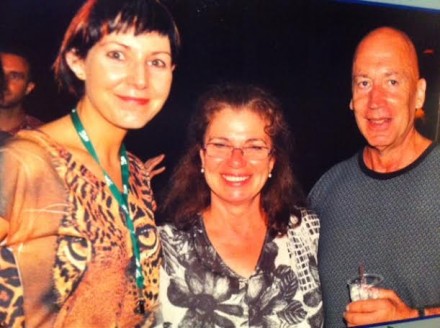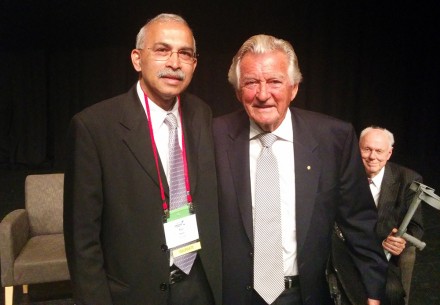 From concept to screen, getting the best results.
From concept to screen, getting the best results.
by Adrian King (Animation/visual–fx producer, designer & artist)
Welcome back. If you missed the first stage (Initial Briefing) in this series you can read it here.
In this instalment we’ll have a look at stage 2. (Concept & Script Development). In stage 1, we defined the brief but not the content. The aim of stage 2 is to define (in written form) the content that will be produced in stage 4, and lay the foundations for stage 3 (Design).
2. Concept/Script development
With a well-defined written brief we can move into defining more of the details of the concept and script. This involves writing the script and gathering a few suitable visual and audio references. The script should be in written form only, formatted in a manner that clearly shows all auditory and visual elements to be heard and seen, in which order they appear, for how long, and indicate any special transformations to occur. It should include the following information.
- All voice over and/or dialogue
- Music & sound effects
- Written description of key visual elements, designs, graphics, text, people, characters, objects or environments to be seen
- All significant motion or transformations to occur
I like to construct scripts in a spreadsheet with four columns; duration, section, audio and visual.
If your animation doesn’t include any voice (for example a visualisation of a biological process for a stage presentation) the audio column might be empty. Getting the visual column filled in is still important. If you plan to use the animation as a backdrop for a verbal presentation, you could jot down some presentation notes in the audio column in place of voice-over to help time it out.
The script will also define the narrative style, (ie: informative, humourous, dramatic, children’s, educational, etc.)
Here’s an example of the beginning to a tongue-in-cheek animated video about quantum physics and mysticism. (If you’d like to make something like this drop me a line!)
|
DURATION
|
SECTION
|
AUDIO
|
VISUAL
|
|
5 secs
|
Opening Sequence
|
SFX: Building vibration and explosion
|
Open on black with a point of light in centre expanding and exploding into millions of stars (the big bang), leaving a star filled universe.
|
|
12 secs
|
|
VO (Eccentric professor): “Mystics and spiritual teachers often use analogies with quantum physics to describe their view of reality, but what do quantum physicists actually think about this. Is this a misappropriation of science or is there some common ground?”
|
Fly through galaxies with montage of symbols zooming past camera. Quantum physics equations, symbols, mystical and spiritual symbols from various traditions, waves/particle illustrations.
|
|
15 secs
|
|
VO (Eccentric professor): You’re about to hear ten quantum physicists de-mystify the most commonly used mystical quantum physics analogies with some nifty animated explanations.
MUSIC: Heroic
DEEP ECHOING VO: “The De-Mystifiers”
|
Cartoon style illustrations of the ten heroic quantum physicists reveal into the frame with their names and titles, followed by the logo.
LOGO: “The De-Mystifyers”
|
|
4 secs
|
Shot 1
|
VO (Eccentric professor): “First stop… Entanglement!”
|
Particles, people and spaghetti meatballs getting in a jumble.
GRAPHIC: “Entanglement”
|
So how do you get from the spark of an idea, to a fully formed script that fits within the duration? That’s a great question and whilst it can take time, it’s not as hard as it sometimes seems. I like to make a Script Plan first. This involves jotting down in bullet-point form all the key ideas/messages you want to convey without worrying about actual words for the voice-over. Then add to these a note of what we need to see to get the message/story across. Keep it simple at this stage and think of script writing as an iterative process, not a linear one.
Once you’ve got all the key message points and key visuals listed in either bullet form or a table, then come back and allocate each section a duration.
From here you can step back and adjust how much time you want to allocate to each section to make sure it fits the duration in the brief. The hardest part here is deciding which bits to cut. Most scripts run overtime on first draft.
Once you’ve worked out the timing for each section and established what points are in or out of the script, start writing the actual voice-over/dialogue. This non-linear approach can avoid spending time writing voice-over/dialogue that ends up cut from the script due to duration constraints.
This can work brilliantly as a collaborative process and bringing on an animation producer or scriptwriter can really help, especially if you’ve not done this before. For example there might be one person working on the key points, another on the actual voice script and another working on defining the visual elements. Involving the production team at this stage will mean they can advise you if the script is looking like it will blow the budget before you unnecessarily script wonderful ideas that are beyond scope. They might be able to suggest ways to show an idea in less time.
Here’s what the above script might look like as a Script Plan:
|
DURATION
|
SECTION
|
KEY POINT/MESSAGE
|
VISUAL
|
|
5 secs
|
Opening Sequence
|
Big Bang
|
Big Bang explosion
|
|
12 secs
|
|
Introduce concept behind video
|
Quantum physics symbols mixed up with mystical symbols
|
|
15 secs
|
|
Introduce ten physicists and tongue in cheek title logo
|
Humourous portraits of ten physicists and logo
|
|
4 secs
|
Shot 1
|
Segment 1 title: “Entanglement”
|
Entanglement graphic
|
For science communication animation, working iteratively on a Script Plan also helps identify anything that needs still needs researching to deliver a script that is both scientifically accurate and engaging. Science communication animation should be fact checked by appropriate scientists and researchers. Where Organisation/agency/stakeholder communication managers should also be included at some point in script development to ensure the needs of any organisations involved are met.
By this time you’ve probably considered what type of voice or narrative style will be best suited to getting your message across. You can find libraries of voice talent agencies online for reference. If it’s essential and the budget permits it can be valuabe to take the script through a professionally conducted user-group for feedback before you commit to production.
It can be useful during script development to view reference images for key visual elements that relate to the concept. This can help bring to attention things that we might not have otherwise noticed in words alone. Whilst it might start to trigger creative ideas, and there can be some overlap between Stage 2 (Script Development) and Stage 3 (Design), it’s not necessary to define the visual style until Stage 3 (Design).
KEY TAKE HOME POINTS
- Prepare a Script Plan before you write voice-over/dialogue
- Allocate durations for key sections in your Script Plan
- Decide what parts must stay/go to fit your brief’s duration
- Work iteratively and look for the missing research
- Collaborative approaches work well
- Consider testing your script on a user-group
- Validate your script with scientists, researchers and others.
KEY ASSETS OF STAGE 2
In the next instalment of this series… we’ll turn your script into a fully formed visual production plan. Whilst a good script defines in written detail what we will see and hear, we still don’t know exactly how it will look. The goal of the design phase is to establish a set of shared expectations that animation production team/artist, client and stakeholders agree on. This includes schedule, storyboards and style frames.
I hope this is useful and that you’ll join me then…
Adrian King (Animation/visual–fx producer, designer & artist)
www.redboat.com.au
@adrian_redboat
(PS: You can send any questions you’d like answered about the animation process by logging in and leaving a comment below, or contact me directly at www.redboat.com.au)



